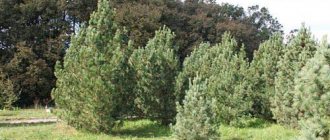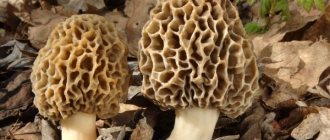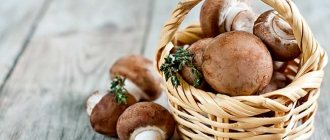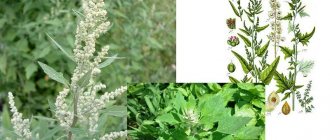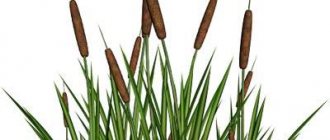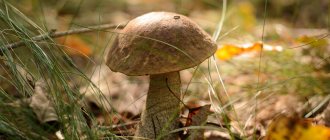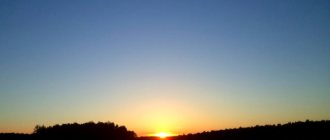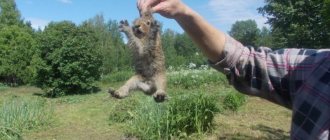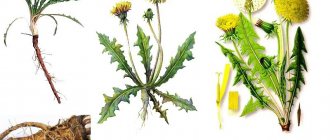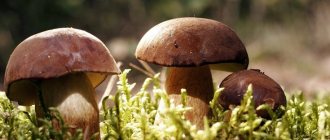Adonis spring, or adonis
Adonis, as this flower is called, is distinguished by large yellow buds with sharp petals, arranged in 2 layers. It begins to grow in the spring, while the last snow still lies on the meadows. It has healing properties that are widely used in traditional medicine to treat inflammation and infection. Adonis buds are widely used for decorative purposes. The height of the stems is from 20 cm.
Blood red geranium
Perennial herbaceous plant with numerous carmine flowers. It has a specific smell; unlike indoor plants, it has pointed leaves. The height of the stems reaches 50 cm, they are covered with small hairs.
Several flowers grow on the stem in June or July, and fruit formation begins in mid-summer - September.
Kirkazon clematis
A herbaceous plant belonging to the group of poisonous ones. It has heart-shaped leaves and reaches a height of 90 cm. A herbaceous liana with erect stems of a dark green hue, sometimes there are individuals with light green leaves. The leaf length reaches 10 cm. Yellow flower beds are located in the axils of the leaves. It blooms at the end of May, and pear-shaped hanging fruits appear a little later.
19.1. Diversity of flora
The vegetation cover of the Perm region is very rich and diverse. The vegetation complex is represented by forests, occupying 2/3 of the entire territory of the region, meadows, swamps, coastal-water, aquatic and forest-steppe groups, as well as mountain forests, meadows and tundra.
The flora of vascular plants of the Perm region, which has been most fully studied, currently contains, according to our data, 1608 species and subspecies of wild plants belonging to 493 genera and 105 families. Its main quantitative indicators are given in table. 19.1. The biological diversity of other groups can be estimated quite approximately - the number of species of bryophytes is at least 500, lichens - more than 400, fungi - more than 850 species.
Table 19.1
Main quantitative indicators of the flora of the Perm region
| Taxon | Number of species | % of total species | Number childbirth | % of total births | Number of families | % of total number of families |
| Moss-moss | 10 | 0,6 | 2 | 0,4 | 2 | 1,9 |
| Horsetails | 8 | 0,5 | 1 | 0,2 | 1 | 0,9 |
| Ferns | 36 | 2,3 | 16 | 3,3 | 9 | 8,6 |
| Gymnosperms | 7 | 0,4 | 5 | 1,0 | 2 | 1,9 |
| Angiosperms | 1547 | 96,2 | 469 | 95,1 | 91 | 86,7 |
| including: | ||||||
| Dicotyledons | 1160 | 72,1 | 367 | 74,4 | 75 | 71,4 |
| Monocots | 387 | 24,1 | 102 | 20,7 | 16 | 15,3 |
| Total | 1608 | — | 493 | — | 105 | — |
This number includes all naturally growing species, both native and adventive (i.e., introduced accidentally or deliberately; the degree of naturalization varies among these species). At the same time, cultivated species that we have not encountered outside culture are not taken into account here, i.e. not wild. The number of native species in the flora is 1319.
The basis of the flora is angiosperms; From other departments, the Ferns are relatively numerous. Lycopods, Equisetaceae and Gymnosperms are represented in almost equal small numbers, but the role of the latter in the formation of vegetation cover is incomparably higher.
The largest families and genera belong to the angiosperms; their lists are presented in table. 19.2 and 19.3.
Table 19.2
The largest families of the flora of the Perm region
| Family | Number of births | Number of species |
| Compositae | 51 | 176 |
| Cereals | 45 | 151 |
| Rosaceae | 20 | 115 |
| Sedges | 8 | 100 |
| Ranunculaceae | 17 | 86 |
| Carnation | 22 | 73 |
| Legumes | 16 | 70 |
| Cruciferous | 32 | 69 |
| Norichnikovye | 14 | 57 |
| Lamiaceae | 20 | 45 |
Table 19.3
The largest genera of the flora of the Perm region
| Childbirth | Number of species | Childbirth | Number of species |
| Sedge | 76 | Eyebright | 11 |
| Cuff | 51 | Bell | 11 |
| Buttercup | 49 | Hawkgirl | 11 |
| Willow | 29 | Onion | 11 |
| Dandelion | 28 | fingerroot | 10 |
| Violet | 24 | Ozsika | 10 |
| Bloodroot | 20 | Thistle | 10 |
| Sagebrush | 20 | Ragwort | 10 |
| Highlander | 19 | cornflower | 10 |
| Bluegrass | 19 | Birch | 9 |
| Veynik | 17 | Carnation | 9 |
| Sitnik | 16 | China | 9 |
| Rdest | 16 | Smolevka | 9 |
| Veronica | 16 | Plaun | 9 |
| Astragalus | 15 | Geranium | 9 |
| Sorrel | 13 | Fireweed | 9 |
| Bedstraw | 13 | Forget-me-not | 9 |
| Chickweed | 12 | Yaskolka | 8 |
| Fescue | 12 | Pigweed | 8 |
| Bonfire | 11 | Sitnyag | 8 |
| Clover | 11 | Horsetail | 8 |
| Polka dots | 11 | Polevitsa | 8 |
| Spurge | 11 | Anemone | 8 |
The flora of vascular plants of the Perm region is numerically significantly dominated by herbaceous plants (slightly more than 85% of all types of flora), mostly perennials. Next come woody plants (133 species - 8.4%), concentrated among Gymnosperms and dicotyledons, 23 species of which are evergreen (gymnosperms and heathers); There are 41 species of trees, the rest are shrubs and shrubs. The group of aquatic herbaceous plants is quite poor (86 species - 5.52%), of which 49 species are actually aquatic, 5 species are amphibians, that is, growing both in water and on land; the rest are air-water. The latter most often grow in water in shallow waters, but are also found along the damp banks of reservoirs. The smallest group is semi-woody plants - only 14 species.
More than one and a half thousand species of flora of the Perm region have very diverse habitats - from the habitats of some plants covering almost the entire earth's land, to endemic species limited to a part of the territory of the Perm region.
Plant species are also unevenly distributed throughout the region. As a result of studying the flora of the region, an original version of the botanical-geographical zoning of the region was developed, identifying 6 districts. In the botanical-geographical region of the middle taiga fir-spruce forests, 893 species were registered, in the region of the southern taiga fir-spruce forests - 1055 species, in the region of broad-leaved spruce-fir forests - 1031 species, in the island Kungur forest-steppe - 957 species, in the region of the middle and southern taiga foothill fir-spruce and spruce-fir forests - 846 species, in the area of northern and middle taiga pine-spruce mountain forests - 578 species. Almost 1/5 of all types of flora are common to all areas - 292 species (18.2% of the total number of species).
Areas characterized by unique plant communities, a high degree of plant biodiversity, or large numbers of rare and endangered species are, in the vast majority of cases, declared as specially protected natural areas. Apparently, it would be advisable for botanical specialists to join the European program “Key Botanical Areas” to identify, based on uniform criteria, the most valuable objects for the conservation of flora in Europe and beyond.
A large group (more than 150 species) consists of plants cultivated in the region (this number does not include species grown in nurseries and botanical gardens, in flower beds and flowerpots). These are traditional agricultural crops and numerous introduced woody, shrubby and herbaceous plants used in forest plantations or as food, ornamental, industrial, melliferous and other crops. There are a lot of such plants, and with the current scope of individual gardening and vegetable gardening, the number is increasing. It is absolutely impossible to take into account everything that is grown by amateur gardeners, especially since the range of crops is very dynamic. However, many species are cultivated widely, and some almost everywhere and constantly. They cannot fail to attract attention; collectively they perform certain ecosystem functions and should be taken into account in floristic reports, although, of course, not “on an equal footing” with wild and naturalized species.
Long-term anthropogenic impact has resulted in a significant change in the natural vegetation cover of the Cis-Urals. Due to economic development, which took place especially intensively from the middle of the 18th century, the forests of the Urals have largely lost their original appearance. Over the course of two and a half centuries, they have been repeatedly felled, as a result of which in many places there has been a replacement of coniferous species (pine, spruce, fir, larch, cedar) with deciduous species (birch, aspen), or at least the role of the latter in the formation of the forest stand has increased significantly.
The entire set of anthropogenic impacts on the plant world can ultimately be reduced to three main forms:
complete destruction of vegetation cover;
creation of cultural communities on the site of destroyed natural vegetation;
synanthropization of vegetation cover.
Complete destruction of vegetation occurs during residential and industrial development, road construction, dumping waste heaps, etc.
Cultural communities (agrophytocenoses, parks, forestry, protective forest belts, lawns) created in place of destroyed natural vegetation do not have such a significant negative impact on the balance of the biosphere as the complete destruction of vegetation, since artificial communities are to a certain extent capable of performing the functions of natural cenoses. However, the created communities, on the one hand, are sources of plant species alien to the local flora, some of which can exhibit a high degree of activity in relation to species of local flora, reducing the number of the latter; on the other hand, cultural communities without human intervention usually do not last long.
Synanthropization of vegetation cover is the most subtle form of response of vegetation cover to anthropogenic impacts, but leading to very significant consequences, expressed in the depletion of the species composition of the flora; replacement of indigenous plant communities with derivatives and synanthropic ones; replacement of endemic species by cosmopolitan ones, stenotopic * - eurytopic * *, autochthonous * * * - allochthonous * * * *; convergence * * * * * plant communities; and also in the evolutionary consequences of this process. All these phenomena lead to a decrease in the biodiversity of the territory, to the unification of the species composition of different ecotopes and territories, to a decrease in the level of stability and productivity of vegetation cover.
The phenomena discussed above also occur in the Perm region, the degree of their severity is proportional to the degree of anthropogenic impact.
In the complex of tasks for the mobilization and restoration of natural resources, solving the most pressing economic problems in a market economy, the leading place belongs to plant resources. An important positive feature of plant resources is their renewability (but also depletion), which, in principle, makes it possible to organize their inexhaustible long-term use.
It should be noted that the flora of the Perm region includes all the main groups of economically useful plants, such as wood, fodder, food, melliferous, medicinal, vitamin-bearing, insecticidal, tanning, dyeing, industrial, and decorative.
Siberian iris
It is listed as a rare plant in the Red Book of the Perm Territory. Found closer to cold regions. Forms long stems up to 110 cm in height, as well as unusual leaves curled around them, growing straight. The leaves are soft, up to 80 cm in length. Irises bloom with purple or blue inflorescences with a yellow or milky center and reach 7 cm in diameter.
Geographical location of the Perm region
The main part of the Perm Territory is in the European part of Russia (99.8% of the total area), and only a small part (0.2% of the area) is in the Asian part. The eastern part of this territorial formation is located on the western slopes of the middle and northern part of the Ural Range, which is the natural border of Europe and Asia. The borders of the region stretch for more than two thousand kilometers, to be precise - 2.2 thousand km. The Komi Republic adjoins the Perm Territory in the north, in the west the region borders on Udmurtia and the Kirov Region, in the south on Bashkiria, and in the east, along the mountains, there is a border with the Sverdlovsk Region.
The diversity and richness of the region's nature is created by two decisive factors: the Ural Mountains in the east and the Kama River, the largest tributary of the Volga, flowing through its territory. Natural landscapes are represented by both flat areas in the western part and mountains in the east.
The shoe is real
Belongs to the orchid family, found in the Pacific regions, Eurasia, and in the Perm region - a rare plant. Forms stems up to 60 cm in height with long, wide and slightly wavy leaves, characterized by high density. During the flowering period, it forms large bracts, as well as an ovoid yellow center; the petals of the buds themselves are often brown.
Telipteris marsh
Part of the group of ferns. It grows up to 70 cm in height, the leaves are arranged in pairs and have a ribbed texture. Prefers to grow near marshy, shady areas.
Plants listed in the Red Book of the Perm Territory have a wide range in rarity scale - from groups 1 to 4. Some species are considered completely extinct, others require strict protection. However, not all of them are easily amenable to artificial selection, which makes it difficult to restore the number of species.
Basegi
Basegi is a most picturesque mountain range rising among the endless expanses of the taiga, on the western spurs of the Ural mountain range. In the old days it was united, now it consists of three separate peaks - Northern, Southern and Middle Baseg. The forests in their area amaze with their untouched beauty. This is a reference object of natural taiga ecosystems.
Middle Baseg is the highest point of the reserve (994 m). On its peaks there are clearly defined slope terraces, in places covered with forest and kurums. Blocks of stones sliding down their slopes are covered with scale-like multi-colored lichens in the form of a peculiar motley pattern. And lonely standing stones and their entire clusters resemble various figures and animals.
The name of the reserve is derived from the North Russian word “baskoy”, the meaning of which is “beautiful”. A mountain-tundra belt runs along the top of the mountain range, and below it there are stunning subalpine meadows. These are places where rare animals of the Perm region are concentrated, as well as rare plant species.
Mushrooms listed in the Red Book
In the publication dedicated to the Perm region, there are several types of endangered mushrooms, including edible ones:
Brioria of Fremont
Edible lichen of unusual shape. Grows on the trunks of coniferous trees. Thallus up to 30 cm long, reddish-brown in color.
Cordyceps capitate
Resembling a matchstick in appearance, it is often found underground, but also grows in close groups on the surface. The spherical head is brown in diameter up to 1 cm.
Varnished tinder fungus
An annual plant with caps of a smooth texture, shiny, brown-beige color. Dense pulp, without taste or smell.
Milkweed mushroom, or spurge
The cap reaches 10 cm in diameter, drooping edges, grows singly or in groups. The color can be brown-red or bright yellow. When cut, the flesh is white, under the cap there is an even “accordion” of a light shade.
Natural landscapes
The richness of nature in the Perm region is evidenced by the fact that there are three hundred and twenty-five natural protected sites on its territory. Among them are natural protected landscapes, nature reserves, geological natural monuments and reserves, as well as many other natural monuments protected by law. Two of them can be especially highlighted: the Vishersky and Basegi nature reserves, both of which are of national importance.
The largest number of protected natural zones is in the Cherdyn region - 44 protected zones. Following it in terms of the number of protected natural zones and objects are: Bolshesosnovsky district - 21, Solikamsky district - 17, Chusovsky district - 17, Krasnovishersky district - 15.
